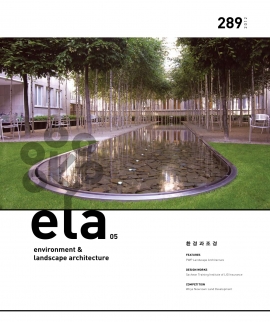Nasher Sculpture Center
건축가 렌조 피아노(Renzo Piano)와 PWP는 소규모 미술관이자 조각정원을 공동작업을 통해 완성하고자 했다. 전 세계에서 가장 중요한 개인 소장 현대 조각 작품 컬렉션 가운데 하나가 이곳에 전시될 예정이다. 부인인 팻시 내셔(Patsy R. Nasher)와 함께 이 컬렉션을 만들어 온 의뢰인 레이먼드 내셔(Raymond Nasher)는 1988년 아내가 세상을 떠난 이후에도 수집 활동을 멈추지 않았다. 내셔 가문은 댈러스 시민들에게 작은 선물로서 조각센터를 건립하기로 결정하기에 이른다.
조각정원에는 20에서 30개에 이르는 작품이 배치될 예정인데, 일부는 영구적으로, 나머지는
순환방식으로 전시될 것이다. 전시품으로는 Pablo Picasso, Alexander Calder, Henry Moore, Auguste Rodin, Barbara Hepworth, Joan Miro, Naum Gabo, George Segal, Joel Shapiro, Roy Lichtenstein, Magdalena Abakanowicz 등의 작품이 있으며, Richard Serra, Mark di Suvero, Jonathan Borofsky의 대형 작품, 끝으로 James Turrell의 새로운 실내디자인 작품이 있다. 이들 가운데 몇몇 작품들은 그 무게가 상당하기 때문에 이러한 하중을 제대로 떠받치는 동시에 복원력이 뛰어난 잔디 및 여러 그루의 큰 나무들을 지탱할 수 있는 특수한 성질의 토양이 필요하게 되었다. 실내 전시공간과 견주어 부족함이 없는 유연성을 확보하기 위해 미국장애인법(ADA)의 기준을 만족시키는 선에서 표면 포장을 최소화하였다. 징두리돌(plinth)을 활용해 공원 전역에 걸쳐 유연한 조명, 음향, 경비 및 관개시스템을 구축할 수 있었고, 관람객이 앉아서 쉴 수 있는 자리뿐만 아니라 작은 조각 작품을 전시할 수 있는 여분의 공간을 확보할 수 있었다
Landscape Architecture _ PWP Landscape Architecture
Architecture _ Renzo Piano Building Workshop
Client _ The Nasher Foundation
Location _ Dallas, Texas, USA
Area _ 1 ha
Completion _ 2003
Photograph _ PWP Landscape Architecture
Renzo Piano was the architect, PWP the landscape architect for a small museum and sculpture garden that together house one of the world’s most important private collections of modern sculpture. The client was Raymond Nasher, who built up the collection with his wife, Patsy R. Nasher, and continued collecting after her death in 1988. The Nasher family decided to build the sculpture center as a gift to the citizens of Dallas.
The sculpture garden is designed as an outdoor gallery that can hold between 20 and 30 pieces, some permanently and some in changing displays. Among the pieces included in the garden are works by Pablo Picasso, Alexander Calder, Henry Moore, Auguste Rodin, Barbara Hepworth, Joan Miro, Naum Gabo, George Segal, Joel Shapiro, Roy Lichtenstein, and Magdalena Abakanowicz, with large pieces by Richard Serra, Mark di Suvero, Jonathan Borofsky, and a room piece by James Turrell. The great weight of some of the pieces and the movement of sculpture in and out of the garden necessitated the invention of a special soil that drains perfectly without catch basins, is strong enough to hold the weight loads, and can support the growth of a special resilient grass turf as well as many large specimen trees. To allow as much flexibility as an indoor museum space, pavement was kept to a minimum while meeting public ADA requirements. Stone plinths distribute flexible systems of lighting, sound, security, and irrigation throughout the garden and provide casual seating and additional sites for smaller pieces of sculpture.




